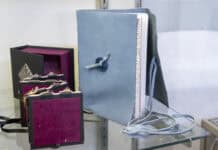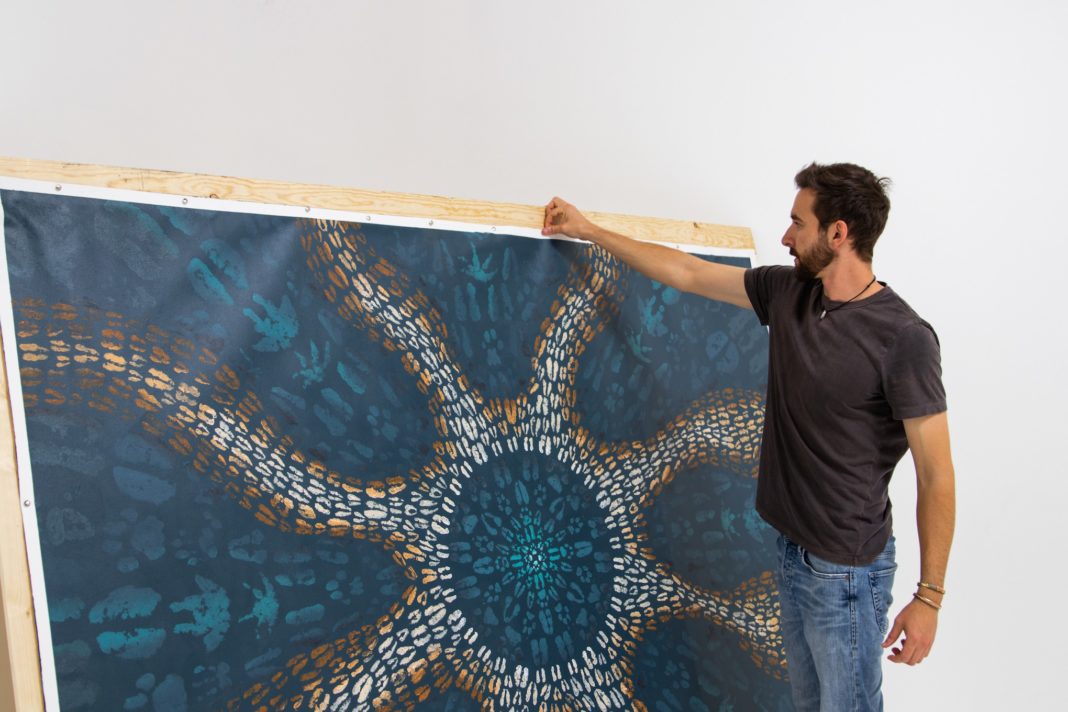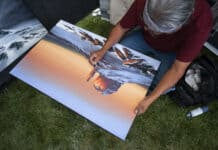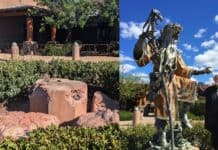A game called Jumanji has a life of its own — an ancient game where the primitive spirit of the jungle can leap out and take hold of your world. “Jumanji,” the 1995 film starring Robin Williams, centered on a supernatural board game that releases jungle hazards upon its players with every turn they take.
For Cannon Winkler, an Arizona native and Cornville resident, life in the jungle of South Africa was nothing like the film, but the sound of the drumbeat heard in the movie is. He refers to that sound as a calling that resonates within him.
“I have been passionate about wildlife and conservation for as long as I can remember. I am sure there are home videos of me at 5 telling my mom that I don’t need to learn how to read, I just need to learn how to survive in the wilderness,” he said.
Winkler graduated from the University of Arizona in 2019 with a double major in business management and entrepreneurship and a certificate in social innovation. He soon realized that this was not the direction he wanted to go in his career.
“I was on track to go the typical corporate route and enjoyed a lot of aspects of it. I think that I would have been good at it — but upon further reflection I started to think about what I really wanted out of life,” he said
Winkler decided to take a different route. He wanted to go to Africa — not knowing what he would do but knowing he would figure it out when he got there. He began researching nature guide training through EcoTraining Wildlife Courses, a guide training school in South Africa for nature guides to learn about the African bush. It was here that Winkler learned about animal behavior, rifle handling, bush skills, survival and animal tracking. Coincidentally, it was the survival skill training that came in handy while he was in South Africa last year.
“I got to South Africa before the pandemic and started training as a safari guide,” he said. “We were living in rural bush camps and there was no separation between the wildlife and us. At night, the hyenas walk around your tent and you can hear the lions roaring in the distance and sometimes not that distant. In the morning, I would find leopard prints close to where we were sleeping.”
“Once COVID-19 hit, we were in lockdown for two months,” Winkler said. “We were stuck in the game reserve with almost no contact with the outside world. Training at the camp came to a halt, and the remaining crew had nothing to do but be still with nature. I started to watch the insects, birds and animals. We were forced to slow down and fully immerse in what was around us — there was no other option.”
“We started to notice that our senses were heightened and we began to smell the animals before we would see them. Even the subsonic sounds of the elephant’s rumble put me right to sleep.”
While Winkler adapted to the rhythms of the wildlife, he became one with nature. He learned how to have safe encounters with the animals and how to manage situations if something went wrong. He approached the wildlife with respect rather than fear. He says that animals are really good at reading body language.
“In our training, the No. 1 rule is that you don’t run. If you run, these animals will chase you. The best thing that you can do is hold your ground, with a few exceptions,” he said.
Winkler began tracking wildlife, searching for lions, elephants, antelope, hippos, leopards, hyenas, cheetah, giraffe, warthogs and wildebeest within the Bushveld, a sub-tropical woodland eco-region of southern Africa, which includes most of South Africa’s Limpopo Province. It is considered a geographical wonder, which supports a biome and encompasses vast stretches of bushveld, dotted with clusters of trees and tall savannah shrubs. He had an idea to create artwork using the footprints of the animals he tracked.
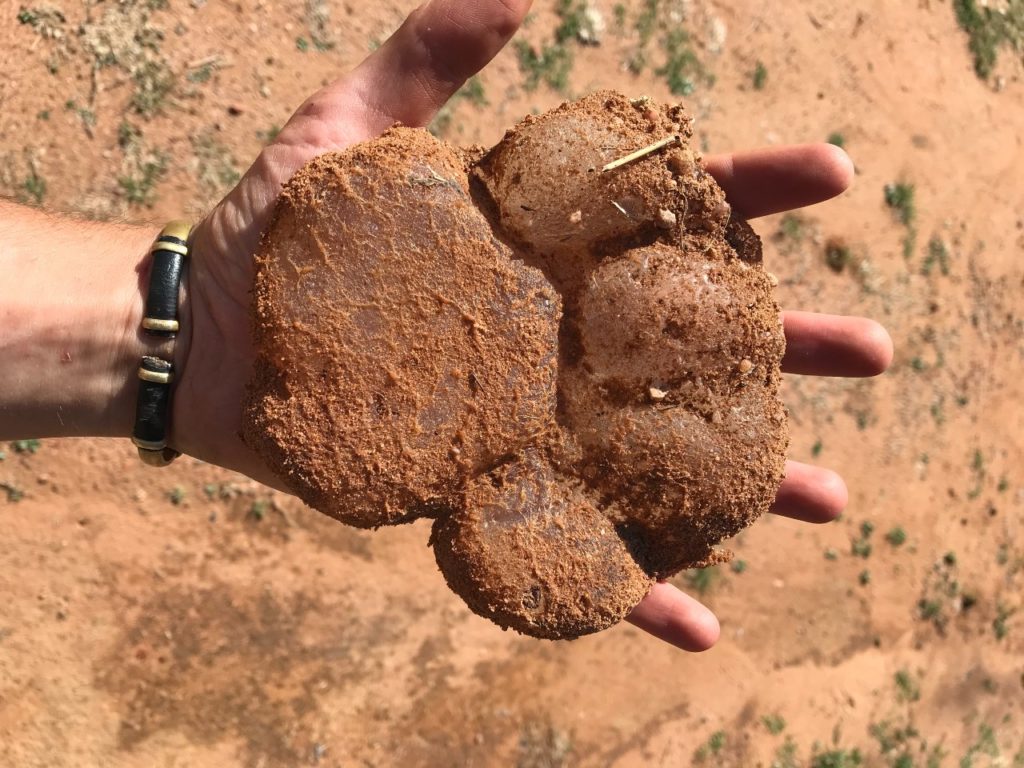
“One of the theories behind my artwork is that there is something in our brains that is naturally drawn to animal prints and interpreting them,” he said. “Since I have developed this art style, I have noticed that people will look at it, not for any particular reason, but they will look at a track and fixate on it. So there is something in our brains that wants us to understand what it is.”
Winkler figured out a way to make imprints of the animal tracks by carefully injecting them with silicone. He would then cover up the track with rocks and sticks to protect it from other animals stepping into it.
Typically it would take about four or five hours for lion tracks and 12 hours for elephant tracks to harden and about 24 hours total to cure. Currently, he has 114 animal tracks from 37 different species.
His artwork has a stylistic layout emulating forms that he sees in nature. Winkler draws inspiration from Bushman rock art, Aboriginal dream paintings and Eastern mandalas. He also sees shapes and patterns during his meditations. The process could take as long as six months to complete a painting. In terms of the actual painting, that could take up to 70 hours depending on the size of the artwork. He coats each imprint with acrylic paint and carefully stamps them on a marked canvas.
“It’s a fluid process,” Winkler said. “Usually I have a general idea for the pattern I want to do. I will mark points out in white chalk so that I will have my lines and general shape.”
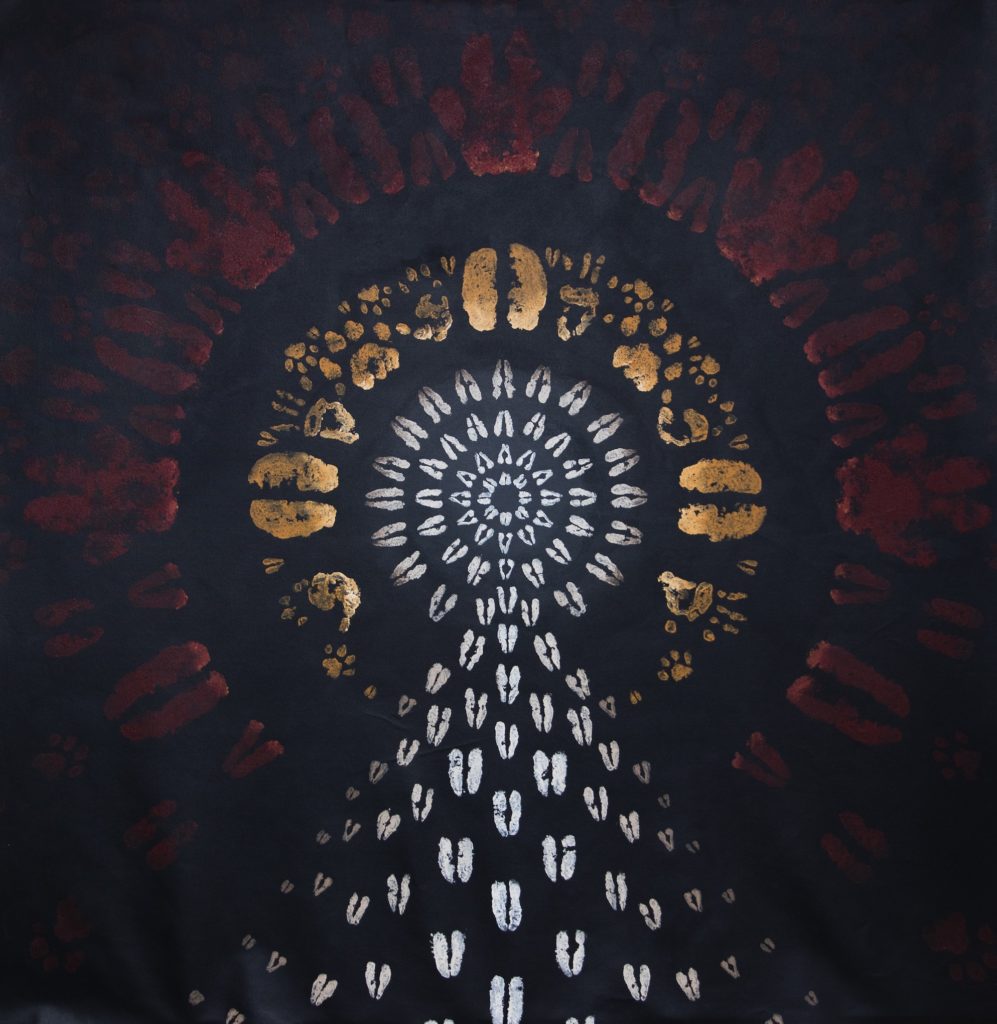
His plan is to do a painting series from a new location each year. This year, he said, is the Bushveld Series, but next year might be the Congo Series. Currently, he is working on a painting from the Southwest.
“This time in July I planned to be tracking the endangered Mexican wolves in eastern Arizona to create a piece focusing on the conservation of the wolves and other local wildlife. However, the trip was postponed due to wildfires and will have to resume again in the fall. Additionally, I would like to include an Alaskan “Frontier Series” in future years.
Winkler created “Walks of Life,” with the sole purpose of contributing to conservation.
“With every painting sold, 30% will go to African Parks, a nonprofit conservation organization that takes on direct responsibility for the rehabilitation and long-term management of protected areas in partnership with governments and local communities,” he said. “At the end of the day, it’s really about the conservation. ‘Walks of Life’ is just my contribution to help with the strengths that I have. It’s a message I hope to share and inspire in others through my artwork.”
For more information, visit walksoflifeart.com.




